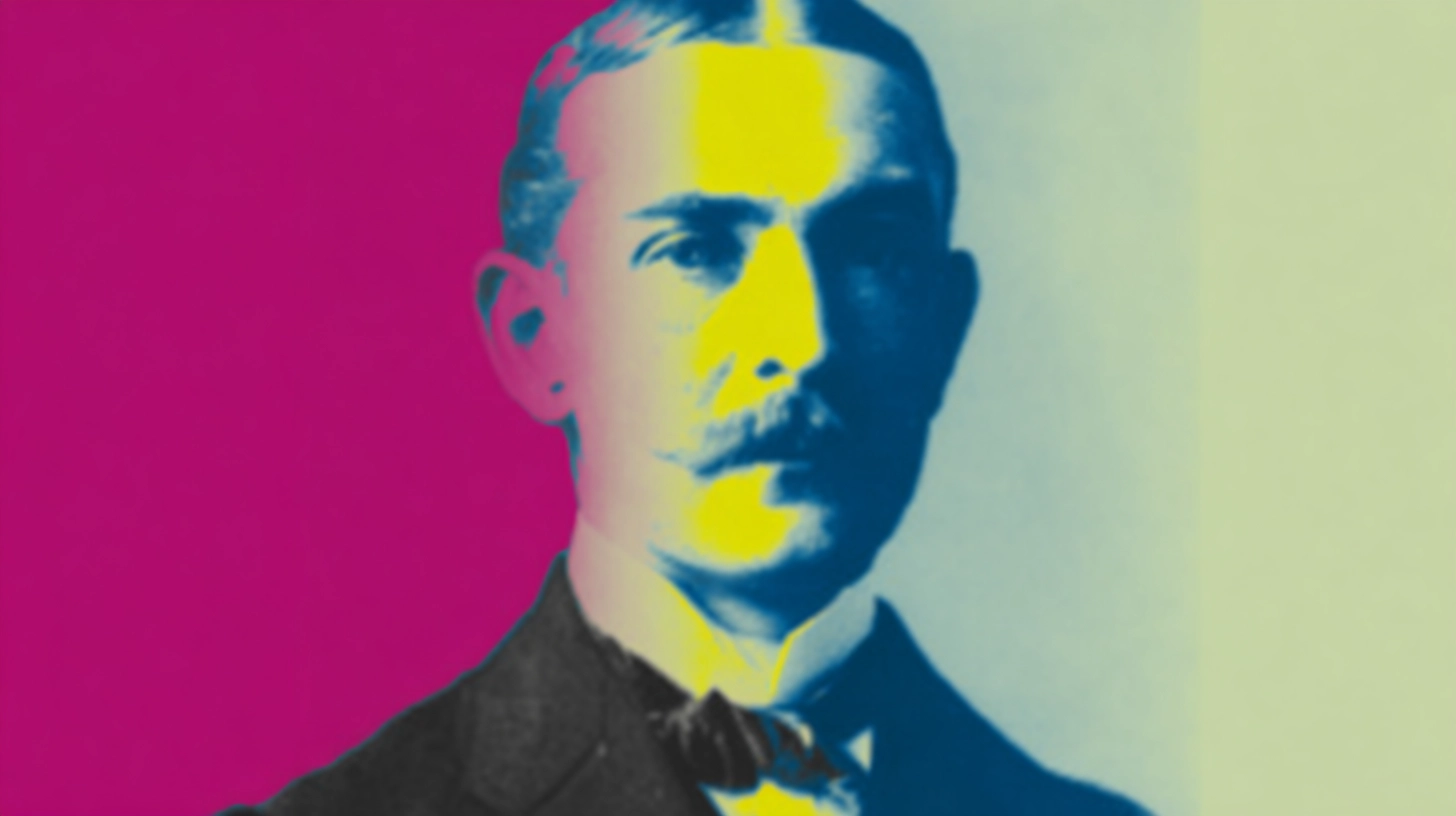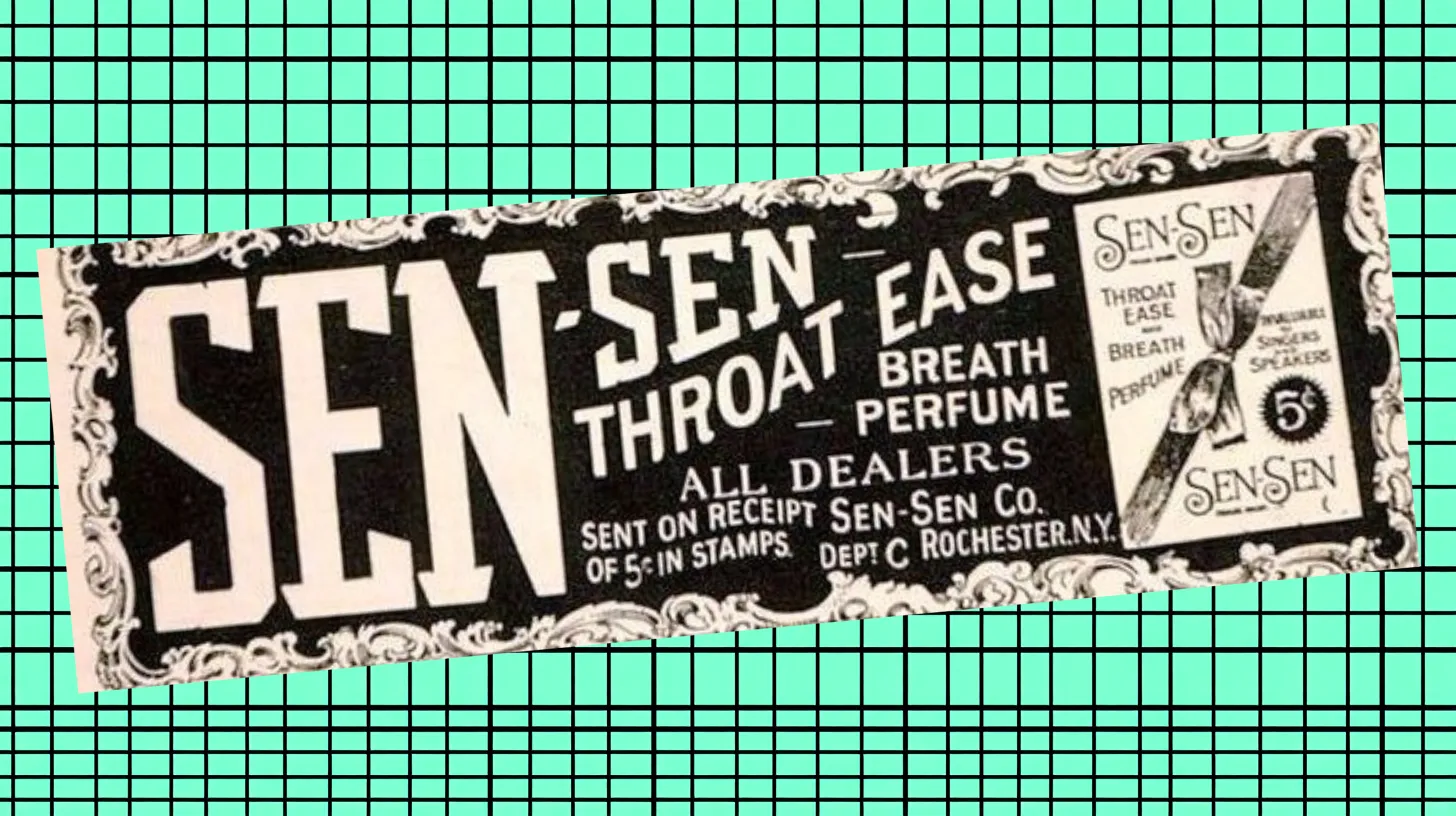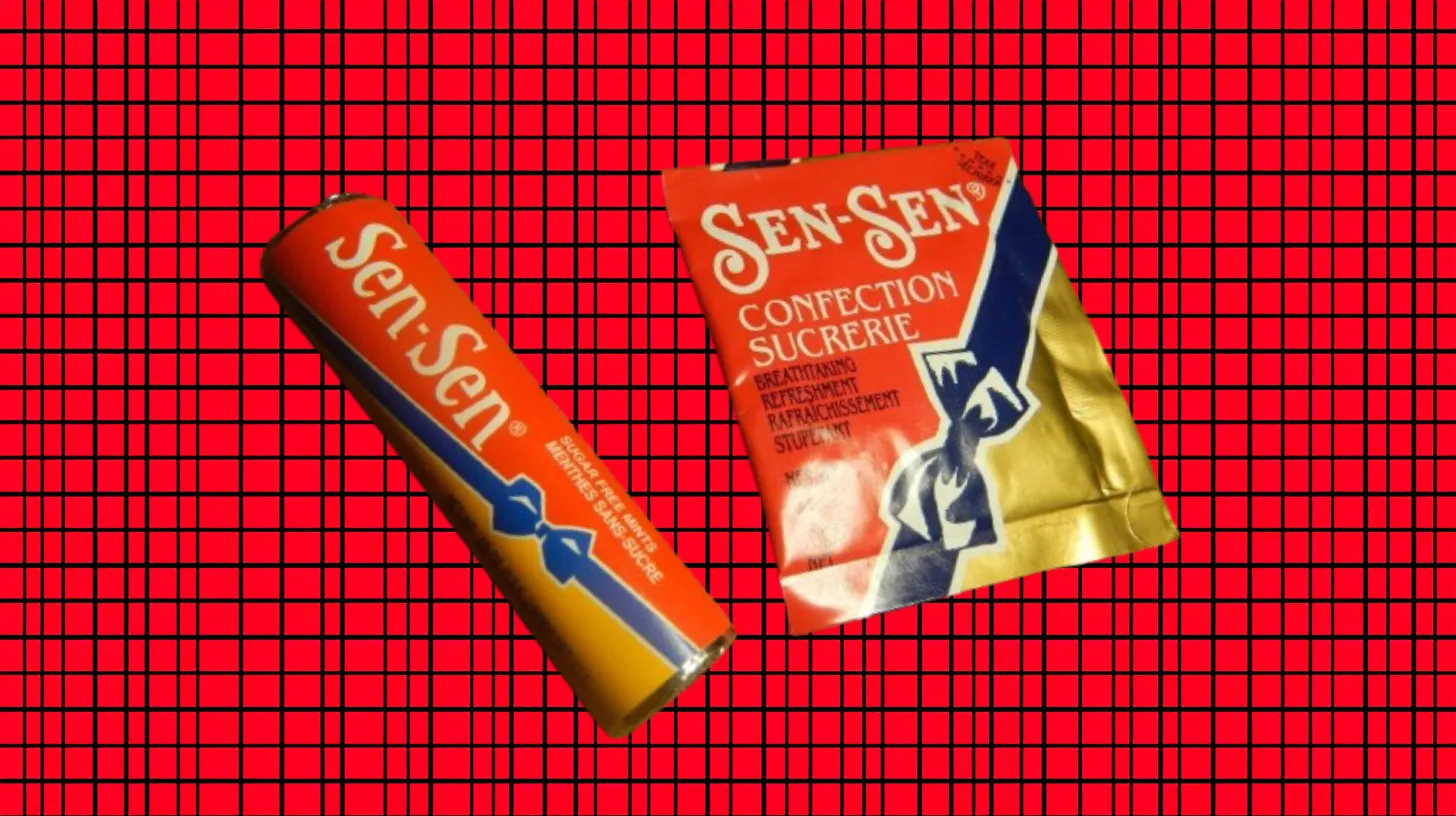.webp)
Sen-Sen
Before TicTacs, before Altoids, before any modern breath mint existed, there was Sen-Sen. And it was intense.
It’s the 1890s. Personal hygiene wasn’t exactly what it is today. Tobacco was king, dental care was primitive, and if you wanted fresh breath... well, you were pretty much out of luck.
Then comes Thomas Byrne Dunn, a perfume dealer from Rochester, New York, who was about to solve a problem nobody knew they had.

Thomas Dunn was running a respectable perfume business when one of his plant supervisors, a man named Kerschner, came up with a cool idea.
A perfume that freshens your breath.
They shipped secret ingredients from Bulgaria, Turkey, Greece, and Italy, then mixed them in giant vats and baked for 10 hours straight. The final product was cut into tiny black squares that looked like miniature coal.
Dunn called it “breath perfume.”
Not breath mints.
Because in the 1890s, the concept of freshening your breath was so foreign, they had to invent new language for it.

Sen-Sen wasn’t messing around. Each piece was only 1/8th of an inch square, but it packed the punch of a freight train.
Users described it as tasting like soap (seriously), but it was strong enough that one piece lasted hours and so potent it could mask cigarette and alcohol breath.
This wasn’t your gentle mint. It was a powerful antidote against bad breath.
The packaging was equally unique. Sen-Sen had little matchbox-style containers where you’d shake out the tiny squares through a small hole.

By the 1980s, Sen-Sen had been America’s go-to breath freshener for nearly a century. Then Billy Joel made the mint an even bigger star.
In his hit song “Keeping the Faith,” Joel nostalgically recalled taking “a mint called Sen-Sen” as part of his 1950s teenage ritual. Joel made this old-school breath mint cool again.
The cultural moment was perfect. Baby Boomers were remembering their youth, a new generation was discovering this “intense” mint, and Sen-Sen was experiencing an unexpected revival.

Sen-Sen’s business story is fascinating. For decades, it dominated its market with virtually no competition.
In 1977, Warner-Lambert sold Sen-Sen to F&F Foods in Chicago. Then, in 2010, private equity firm GemCap bought F&F Foods. Finally, in 2013, after 123 years, production came to an end.
The secret formula and original equipment traveled from company to company, but the process remained virtually unchanged from the 1890s.
Few products can claim that kind of consistency.
Why did Sen-Sen finally disappear? One word. Taste.
As breath mints became sweeter and more pleasant, Sen-Sen’s aggressive, soap-like flavor became a liability. Newer products like Breathsavers and Tic Tacs offered fresh breath without the punishment.
The soapy flavor just couldn’t keep up with the times.
In July 2013, F&F Foods quietly discontinued production. America’s oldest mint was finally retired.
Today, vintage Sen-Sen packages sell for hundreds of dollars on eBay. The Smithsonian has specimens in its collection.